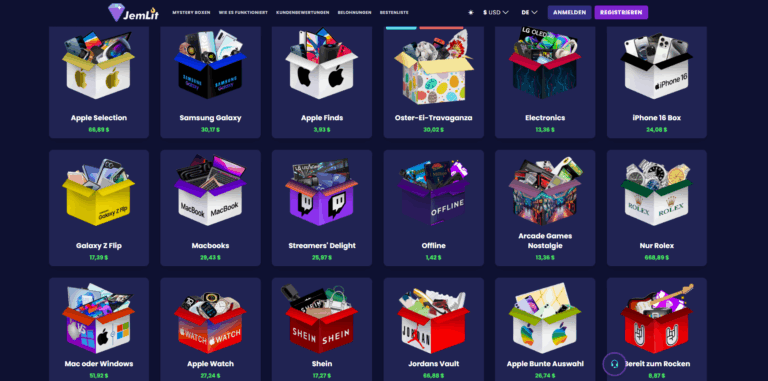Mobile payments have revolutionized the way we conduct financial transactions, making it easier and more convenient than ever to pay for goods and services. With the integration of digital currency platforms, mobile payments are poised to undergo another transformation, offering even greater efficiency, security, and global reach. This blog post explores the evolution of mobile payments, the role of digital currencies, and the impact on crypto prop trading.
The Rise of Mobile Payments
The advent of smartphones brought with it the potential for mobile payments, enabling users to make purchases directly from their devices. Over the past decade, mobile payment solutions like Apple Pay, Google Wallet, and Samsung Pay have become mainstream, driven by the convenience of contactless payments and the ubiquity of mobile devices. Popular mobile wallets across the world have made it easier for people to adopt these technologies and integrate them into their daily lives.
Mobile payments offer several benefits:
- Convenience: Users can make payments anytime, anywhere, without the need for cash or cards.
- Speed: Transactions are completed quickly, reducing wait times at checkout.
- Security: Mobile payments often include enhanced security features like tokenization and biometric authentication.
However, traditional mobile payments still rely on the existing banking infrastructure, which can be slow, expensive, and inaccessible to many people around the world. This is where digital currency platforms come into play, offering a new paradigm for mobile payments.
Integrating Digital Currency Platforms
Digital currency platforms, built on blockchain technology, provide a decentralized alternative to traditional banking systems. Cryptocurrencies like Bitcoin, Ethereum, and stablecoins such as USDT are gaining traction as viable payment methods thanks to their low transaction fees, fast processing times, and global accessibility.
Integrating digital currency platforms with mobile payments can address many of the limitations of traditional systems:
- Lower Transaction Costs: Digital currencies can significantly reduce transaction fees compared to traditional payment methods, especially for cross-border transactions. This is particularly beneficial for international payments and remittances.
- Faster Transactions: Blockchain technology enables near-instantaneous transactions, eliminating the delays associated with traditional banking processes. This speed is crucial for both consumers and businesses, enhancing the overall payment experience.
- Financial Inclusion: Digital currencies can provide financial services to the unbanked and underbanked populations, who often lack access to traditional banking infrastructure. Mobile payments powered by digital currencies can democratize access to financial services on a global scale.
- Enhanced Security: Blockchain’s immutable ledger and cryptographic security features make digital currency transactions highly secure, reducing the risk of fraud and unauthorized access.
The Impact on Crypto Prop Trading
Crypto prop trading, where firms use their own capital to trade cryptocurrencies, stands to benefit significantly from the integration of digital currency platforms with mobile payments. Here’s how:
- Increased Liquidity: The widespread adoption of digital currencies for mobile payments can increase the overall liquidity of the cryptocurrency markets. Higher liquidity leads to more stable prices and reduced volatility, creating a more favorable environment for prop trading.
- Market Expansion: As digital currencies become more mainstream, the market for crypto prop trading will expand. This increased market size offers more opportunities for trading firms to profit from price movements and arbitrage opportunities.
- Enhanced Trading Tools: The data generated from mobile payment transactions can provide valuable insights for prop traders. AI and machine learning algorithms can analyze this data to identify trends, predict market movements, and develop more effective trading strategies.
- Global Reach: Digital currency platforms facilitate seamless cross-border transactions, allowing prop trading firms to operate on a global scale. This global reach can open up new markets and trading opportunities that were previously inaccessible.
Real-World Examples
Several companies are already exploring the integration of digital currency platforms with mobile payments:
- BitPay: BitPay is a payment service provider that enables businesses to accept Bitcoin and other cryptocurrencies. It offers a mobile app that allows users to manage their digital currencies, make payments, and convert cryptocurrencies to fiat currency seamlessly.
- Coinbase: Coinbase’s mobile app supports a wide range of cryptocurrencies, allowing users to buy, sell, and pay with digital currencies. The app also includes features like real-time price tracking and secure storage.
- Square: Square’s Cash App allows users to buy, sell, and hold Bitcoin. The integration of Bitcoin payments with a popular mobile payment app like Cash App demonstrates the potential for digital currencies to become a mainstream payment method.
The Future of Mobile Payments and Digital Currencies
The integration of digital currency platforms with mobile payments is still in its early stages, but the potential for future growth is immense. As more consumers and businesses adopt digital currencies, the benefits of faster, cheaper, and more secure transactions will become increasingly evident.
Several trends are likely to shape the future of this integration:
- Regulatory Developments: Governments and regulatory bodies are beginning to recognize the potential of digital currencies and are working on frameworks to ensure their safe and sustainable use. Clear regulations will help foster innovation and protect consumers.
- Technological Advancements: Ongoing improvements in blockchain technology, such as increased scalability and interoperability, will enhance the capabilities of digital currency platforms. These advancements will make it easier to integrate digital currencies with existing mobile payment systems.

- Consumer Adoption: As consumers become more familiar with digital currencies and their benefits, adoption rates will increase. This shift will drive demand for mobile payment solutions that support digital currencies, further accelerating the integration process.
- Business Adoption: More businesses will begin to accept digital currencies as a payment method, driven by the advantages of lower transaction fees and faster settlement times. This trend will create a positive feedback loop, encouraging more consumers to use digital currencies for everyday transactions.
Conclusion
The integration of digital currency platforms with mobile payments represents the next evolution in the financial ecosystem. By offering lower transaction costs, faster processing times, and enhanced security, digital currencies are poised to revolutionize the way we make payments. For crypto prop trading firms, this integration opens up new opportunities for market expansion, improved liquidity, and advanced trading strategies. As technology and regulatory frameworks continue to evolve, the future of mobile payments and digital currencies looks incredibly promising, paving the way for a more inclusive, efficient, and secure global financial system.




